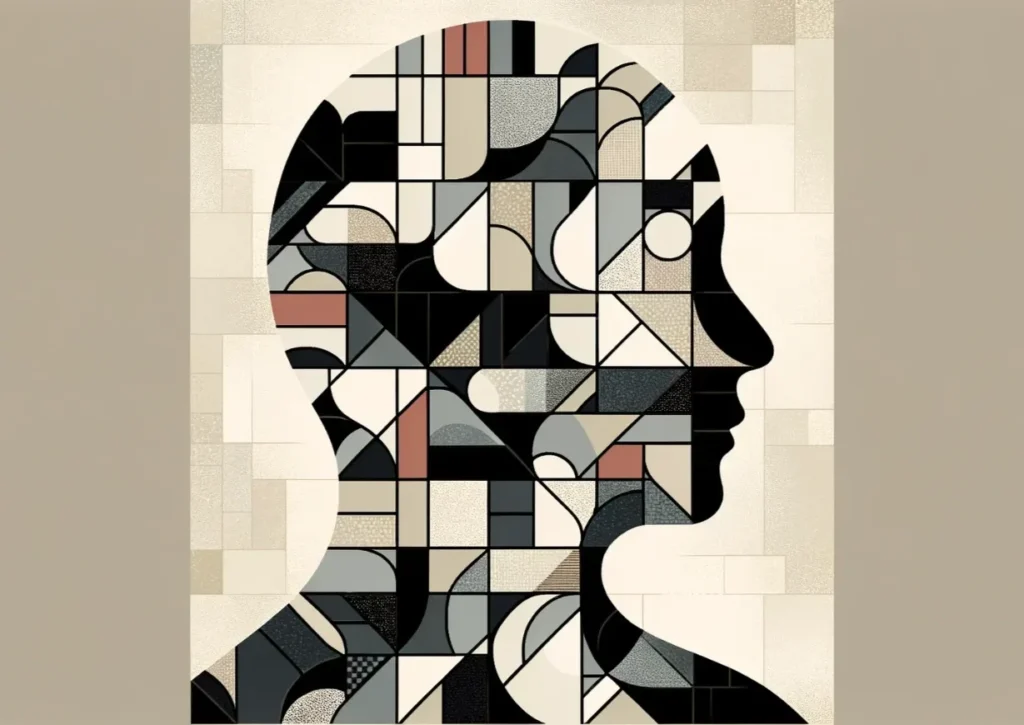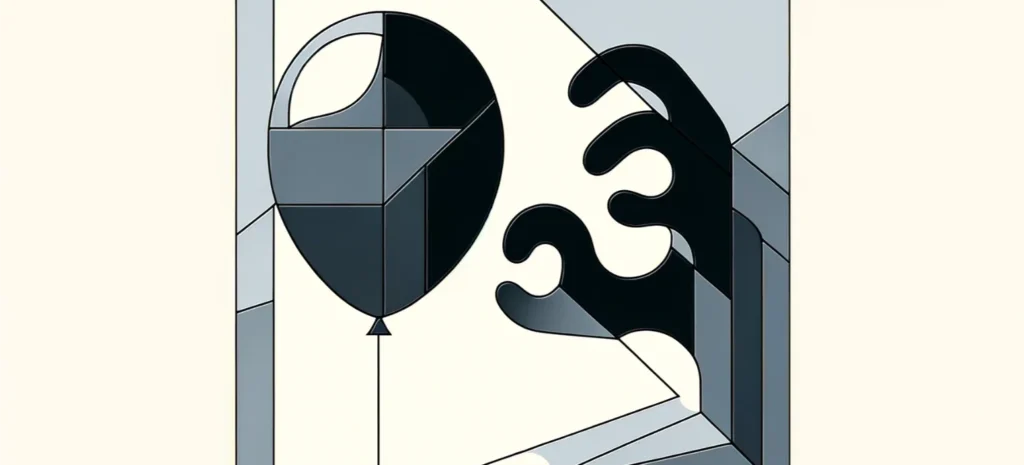Dmitrij Achelrod PhD
Dmitrij Achelrod PhD
Amongst the manifold routes into the human psyche, there lies a path less traveled, a journey that intertwines the mysterious realms of psychedelics and the depths of shadow work. But what happens when the introspective practice of shadow work meets psychedelics? Can these substances, often shrouded in both intrigue and controversy, help us to illuminate the hidden corners of our being?
1. Introducing Psychedelic-Assisted Shadow Work
Psychedelics, a group of substances known for their ability to profoundly alter perception and consciousness, have danced through human history, from sacred rituals to modern therapy rooms. They beckon us to explore beyond the usual boundaries of our minds, offering glimpses into realms of extraordinary insight.
Shadow work invites us to delve into the darker, often neglected aspects of ourselves. It’s an exploration of the uncharted territories of our psyche, the parts of us we’ve consciously or unconsciously exiled to the “shadows”, the parts that have been suppressed (moved out of conscious awareness) or disowned (“That is not me. Others are like that – but not me”). These hidden fragments, often laden with emotions like fear, shame, and unprocessed grief, hold the keys to our deepest psychological healing and growth.
As we stand at the threshold of this intersection, one might ask: Can the altered states induced by psychedelics provide the catalyst needed to embrace and integrate our shadow parts? Could this synergistic blend hold the potential for a level of self-awareness and liberation that transcends traditional pathways of personal growth?
In this exploration, we invite you on a journey to understand the essence of the shadow, to uncover the potential of psychedelics, and to discuss how their union could lead us toward a more authentic, harmonious, and aware life. This is not just an academic inquiry but a call to adventure – a venture into the depths of the self, where the treasures of our inner world await discovery. A call that beckons us to question, to seek, and to open ourselves to the profound possibilities that arise when we open and listen deeply.
1.1 Unveiling the Shadow: Carl Jung’s Foundational Contribution

The shadow, according to Jung, is a critical part of our unconscious mind. It is akin to a hidden room in the vast mansion of our psyche, where we store those parts of ourselves we choose to repress or deny. Imagine a tapestry of emotions, memories, impulses, and desires, all intricately woven and yet concealed from our conscious awareness. These are the elements of our being that we, either out of fear, shame, or societal conditioning, have pushed into this shadowy realm. However, they are not merely the darker, negative aspects, but also the unexpressed talents and silenced voices of our true potential.
Why, then, is the shadow so crucial in our journey of self-discovery? Jung believed that by turning a blind eye to our shadow, we limit our psychological growth. He argued that our shadows, though seemingly daunting, hold the key to our wholeness. It is only by embracing these concealed parts of ourselves that we can achieve true self-integration and authenticity. Have you ever felt a sense of incompleteness, a feeling that something within you remains unacknowledged? This is the shadow’s subtle beckoning – a call to explore the unexplored.
Jung’s insight went beyond individual psychology. He saw the shadow as a societal phenomenon as well, where collective shadows manifest in cultural norms and shared unconscious biases. In acknowledging our personal shadows, we not only embark on a journey of individual healing but also contribute to the healing of our collective psyche.
So, how do we begin to unveil this shadow? It starts with the willingness to look within, to explore the depths of our inner world with honesty and courage. This process is not about casting judgment on the parts of ourselves we find; rather, it’s about bringing light to the forgotten corners, offering acceptance, and understanding to all that we are.
Jung’s profound contribution to our understanding of the shadow lays the foundation for a transformative journey. It invites us to question: What parts of myself have I kept hidden? What potential lies buried in these shadows?
1.2 Shadow Work in the Tapestry of Modern Approaches to Psychotherapy and Personal Growth
Some might wonder why it is that the term “shadow” or “shadow work” hasn’t found resounding resonance in mainstream modern psychotherapeutic and personal growth models. If at all, the concept of shadow appears in textbooks about Transpersonal Psychology by authors like Stanislav Grof, Abraham Maslow or Ken Wilber. Does it mean that the concept of “shadow” is outdated or wrong?
No, not at all. While nowadays we rarely speak of the “shadow” and some of Jung’s language might appear archaic in its original form, the concept of shadow was foundational to many modern streams of therapy. We often mean the same thing by different terms or developed overlapping and related concepts. A few examples of how the principle of “shadow” is echoed by modern approaches:
The highly popular Inner Family Systems (IFS) developed by Richard Schwartz is a therapy that acknowledges multiple sub-personalities or ‘parts’ within a person. IFS differentiates three types of parts: Exiles, Managers and Firefighters. The Exiles are comparable to our lost “inner children”, the most vulnerable parts of our psyche that we protect at all costs with our Managers and Firefighters. The core idea of IFS resonates with Jung’s shadow work, as it also involves engaging with and understanding different aspects of the self, especially those that are often hidden or in conflict. Shadow work emphasizes integrating these neglected or suppressed parts of our personality, which aligns well with the IFS principle of achieving harmony among different parts.
Similarly, Mindfulness-Based Cognitive Therapy (MBCT), encourages a non-judgmental awareness of all aspects of one’s experience, including thoughts, emotions, and sensations that might be uncomfortable or distressing. This awareness and acceptance can be seen as akin to acknowledging and integrating the shadow, as it involves facing parts of the self that are often ignored or suppressed because they are associated with (too much) discomfort.
Gestalt therapy, developed by Fritz Perls, emphasizes self-awareness, wholeness and integration of the self, including aspects that are often out of awareness. This approach encourages individuals to become aware of their feelings, thoughts, and behaviors as they occur in the moment, including things that we tend to ignore or circumvent because of the suffering they cause. By bringing these aspects into conscious awareness, we can begin to integrate them and experience wholeness – a foundational assumption that is shared with shadow work.
In addition, the advent of psychedelic-assisted psychotherapy in recent years has given the concept of shadow a perceivable boost. Leading researchers like Robin Carhart-Harris have argued that psychedelic research provides support for Jung’s idea of the shadow and will even contribute to making shadow work more mainstream[1]. In any case, the way we understand shadow work is not exclusively limited to analytical psychotherapy (and some of its more occult practices like dream analysis), but rather as a form of uncovering inner parts and integrating into conscious awareness what has been pushed into the unconscious. Hardly anyone could argue that the virtues of shadow work, like facing one’s pain with compassion and courage instead of running away from it, are nonsensical. In the end, it is important to view shadow work in a wider framework of ecology of practices and to keep what is useful (for those keen on a little side-quest, we wrote an eight-part series on different modalities for engaging in inner work: click). Remember that the term “shadow” is a metaphor for certain parts of our psyche that have moved out of conscious awareness. It is only one of many attempts to describe the complex dynamics of our psyche. Jung’s language as well as the process of shadow work uses a lot of symbolism, archetypes, and leans into realms of the mystical and spiritual, which, by definition, are difficult to be measured by the materialist scientific method. Modern psychotherapy like CBT prefers to have clearly quantifiable parameters instead of mythopoetic excursions into the psyche. Ironically, this aversion of the unquantifiable, the mystical, might have pushed shadow work into the literal shadow of modern cognitive psychotherapy.
Keeping the above contextualization in mind, let us proceed with our journey to the underworld of our awareness. In view of the caveats of shadow work, let us open ourselves to the possibilities of growth and transformation that shadow work can offer.
2. Transformative Shadow Work – What Is It and How Does It Work?
Embarking on the journey of shadow work is akin to setting sail on a vast, uncharted ocean of the self. It is a voyage that takes us deep into the heart of who we are, beyond the façade of our everyday persona, into the rich, often obscured depths of our inner landscape. This journey is both challenging and profoundly rewarding, offering a path to self-discovery and personal development.
Shadow work is not merely a psychological exercise; it is a holistic process of self-integration. It invites us to confront and embrace the parts of ourselves that have been hidden away in the shadows – the fears, the wounds, the unacknowledged strengths, and the suppressed dreams. By shining a light on these hidden aspects, shadow work can facilitate a transformation that permeates every facet of our being.
But why embark on this journey? What significance does it hold in our personal development? And how do we navigate the complexities and challenges it presents? These are the questions we will explore as we delve deeper into the essence of shadow work.
In the forthcoming sections, we will uncover the profound impact of shadow work on personal growth, emotional healing, and relational dynamics. We will also explore the diverse methods and practices involved in this journey, addressing the challenges and the immense courage required to face our innermost selves.
2.1 The Significance of Shadow Work in Personal Development
“Until you make the unconscious conscious, it will direct your life and you will call it fate.”
- C.G. Jung
In the grand tapestry of personal development, shadow work emerges as a vital thread, weaving together the fragments of our emotional and psychological selves into a more cohesive and authentic union. This process, though often overlooked, is a crucial step in our journey toward wholeness, offering profound insights into the core of who we are and who we can become.
2.1.1 Shadow Work Unveils our Emotional and Psychological Wholeness
The journey of integrating our shadow begins with the brave act of acknowledgment. Imagine standing at the edge of a deep forest, the unknown terrain of your subconscious. Here, acknowledging the shadow means stepping into this forest, ready to explore its hidden depths. This exploration brings to light the repressed emotions, traumas, and aspects of our personality that have been tucked away. By bringing these elements into conscious awareness, we start a process of healing that is both deep and transformative.
The transformative potential of this journey lies in its ability to reshape our relationship with ourselves. As we integrate these previously disowned parts, we move towards a more authentic version of ourselves, unburdened by the weight of unacknowledged fears and desires. The energy (or attention) that we needed to keep certain parts suppressed can be eventually freed up and transmuted for more life-affirming purposes. This leads to a more grounded emotional and psychological health, where we are less fragmented and more whole. It’s akin to finding missing pieces of a puzzle; each piece we find and fit into place brings us closer to viewing the complete picture of our psyche.
2.1.2 Why Shadow Work Will Enhance your Relationships and Self-Understanding
Shadow work also plays a pivotal role in how we relate to others. Often, our relationships act as mirrors, reflecting back the parts of ourselves we have yet to acknowledge. For instance, the traits we find challenging in others may be aspects of our own shadow seeking recognition. Have you ever caught yourself thinking about another person something like “Oh, this guy only cares about money, how pathetic” or “She is so full of herself, I can’t believe how narcissistic and egotistical she is”? The answer is very likely a resounding “yes”. It might be that some of our apprehension for others has actually nothing to do with the other, but that it is an indirect reflection of certain qualities or character traits that we can’t see in ourselves and only see in the other person – this is called projection. By engaging in shadow work (i.e. acknowledging those qualities also in ourselves), we become more aware of these projections, leading to deeper self-understanding and more authentic relationships.
This self-awareness transforms our interactions with others. It helps us respond from a place of conscious awareness rather than react from the shadows of our unconscious biases and triggers. As a result, our relationships become less about unconscious patterns and more about genuine connections. We start to appreciate the complexity and depth in others, just as we learn to embrace it in ourselves.
Moreover, shadow work fosters empathy and compassion, both for ourselves and for others. By facing and accepting our own hidden aspects, we become more tolerant and understanding of the imperfections in others. In W.H Auden’s words, you can eventually allow yourselves to “love your crooked neighbor with your crooked heart”. This shift not only improves our existing relationships but also paves the way for new connections that are rooted in authenticity and mutual respect.
In essence, shadow work invites us to a profound journey of self-discovery and transformation. It challenges us to face the unexplored territories of our mind and, in doing so, offers a path to a more integrated, healthy, and fulfilling life.
2.2 What Are The Signs That Your Shadow Is Taking Over?
In the realm of self-discovery, engaging with the shadow is both an art and a science. It requires a blend of introspection, courage, and compassion with the right guidance by skilled therapists, facilitators, coaches and/or fellow travelers. This journey into the depths of our psyche is marked by various methods and practices, each offering a unique lens through which to view and understand the hidden aspects of ourselves. Only one thing is certain: this path is not without its challenges, requiring us to confront and embrace the parts of ourselves we’ve long avoided.
The start of shadow work is to realize and accept that we have a shadow like everyone else. It is not a shortcoming or fundamental flaw of our character. Once we acknowledge this truth, we can begin working with the energies of our shadows instead of falling prey to them.
To recognize when our shadow is showing up, we have to pay attention to certain behaviors and emotional responses that seem uncharacteristic, intense or even extreme. Sometimes we say or do something and after calming down we might wonder, “Was that really me?”. These signs can provide valuable insights into the aspects of ourselves that we might be unconsciously avoiding or suppressing. Here is a selection of commonly observed behaviors to look out for:
- Reactivity: If you find yourself reacting automatically and excessively, often feeling triggered or overwhelmed by emotions, it’s a sign that your shadow is at play. This reactivity often stems from unresolved and unacknowledged wounds, particularly from early life experiences.
- Projection: When you attribute qualities to others that you deny in yourself, you are projecting. This is especially common with qualities you dislike and vehemently deny possessing (a great example of someone doing this all the time: Donald Trump). Projection blinds you to recognizing these aspects within yourself and is a rejection of responsibility for one’s own imperfections.
- Aggression: Aggressive behavior, whether outward or inward, signifies that your shadow is present. Aggression often masks vulnerability and softness, and it involves treating others or yourself harshly.
- Excessive Positivity: Overcommitting to positivity can be a sign that you’re distancing yourself from your shadow, avoiding negative emotions like anger, fear, and shame.
- Emotional Numbness: Being cut off from your emotions is a sign of your shadow manifesting. This numbness might be a defense against pain associated with certain emotions and is often normalized or mistaken for detachment.
- Eroticizing Unresolved Wounds: If you find yourself channeling unresolved emotional wounds or unmet needs into sexual contexts, it might be shadow manifestation. This behavior often involves acting out unhealthy power dynamics in sexual relationships.
- Dehumanizing Others: When you dehumanize others, e.g. by bullying them, your shadow is at play. This behavior is a sign that you’re distancing yourself from empathy and compassion.
- Overtolerance of Harmful Behavior: Tolerating others’ aggressive or harmful behavior excessively, especially if it stems from a fear of confrontation, indicates that your shadow is active. This often masks fear and lack of self-respect.
- Exaggerated Need to Please: An overwhelming desire to please or be liked can be a shadow manifestation, especially if it stems from a lack of self-acceptance and suppressed anger.
- Self-Sabotage: Engaging in self-defeating behaviors like procrastination or playing the victim can be a sign of your shadow, often reflecting neglected aspects of your inner child and an attachment to staying small.
- Refusal to Apologize: If you find it hard to admit fault and apologize, no matter how grave or negligible your deed, it’s a potential shadow sign. This behavior is often a defense against feeling shame and vulnerability.
2.3 Engaging with the Shadow: 5 Key Capacities We Need to Cultivate
Engaging in shadow work requires us to cultivate a solid ground from which we can work. Five capacities and qualities are particularly important in our quest of finding, facing and integrating our shadows [2]:
- Being Present
One of the primary challenges in shadow work is the capacity of being present. To engage effectively with our shadow, we must provide an undistracted, grounded presence. This means being fully in the moment, aware of our emotional state and bodily sensations, and not getting lost in the past or future. Being present is about experiencing our emotions, feelings and thoughts as they arise, not as we wish them to be. It requires us to abandon the comfort of avoidance and to embrace the raw, unfiltered reality of our inner world. At the same time, being present is not a state of passive observation. It involves actively sensing and observing what is occurring within us, registering our emotional states, and allowing ourselves to be fully immersed in the experience, with curiosity and courage. This practice of presence is not about seeking comfort but about anchoring ourselves in the reality of our being, regardless of the discomfort it may bring. - Cultivating Equanimity, Steadfastness and Internal Stillness
Another key capacity we need to practice for effectively working with our shadows is cultivating internal stillness amidst the emotional turbulence that shadow work can stir up. This stillness does not imply inaction or passivity but rather a focused awareness that creates a space for healing and integration. It involves sensing the space between thoughts, the pauses between breaths, and allowing these spaces to expand, bringing our inner turmoil into this realm of stillness. We become intimate with whatever emotion comes up, but do not get completely swallowed up by it. - Navigating Compassion and Boundaries
A significant challenge in shadow work is managing self-compassion while maintaining healthy boundaries. When we explore our shadow, we may become empathically overwhelmed by the emotional states we encounter, losing our sense of autonomy and focus. To prevent this, we need to establish an “empathic shield” – a metaphorical barrier that allows us to empathize with our shadow elements without becoming overly absorbed or lost in them. This shield helps us maintain just enough separation to keep our shadow elements in clear focus while being intimately connected with them. It involves a delicate balance between loving-kindness and self-compassion on the one hand and the ability to use our anger energy (“red energy”) to set healthy boundaries on the other hand. - The Beginner’s Mind: Embracing the State of Not-Knowing
Engaging with the shadow also means embracing a state of not-knowing. This state is characterized by openness and curiosity, free of fixation on pre-existing knowledge or expectations. It’s about being alert, present, and receptive to whatever arises, without rushing to categorize or define the experience. Establishing and stabilizing not-knowing involves developing a grounded witnessing awareness, maintaining healthy detachment, and fostering curiosity. It’s about relating to our experiences rather than identifying with them or defending our preconceptions about experiences. In Zen Buddhism, this is called the Beginner’s Mind. - Deepening Intimacy with the Unknown
Finally, the challenge in shadow work is to deepen our intimacy with the unknown. It is about feeling into the source of our inner mysteries, opening ourselves to the reality that is more profound than mere answers. This process involves a significant transparency of the self to Being, encompassing all our qualities, including those housed in our shadow.
While we can only scratch the surface of practical shadow work in this article, we recommend Robert August Masters’ (PhD) book “Bringing Your Shadow out of the Dark” for those who want to dive deeper.
2.4 Dealing With Key Emotions in Shadow Work
Engaging with the shadow is a nuanced process, one that varies significantly based on the specific emotional terrain we are navigating. Here, we briefly address the methods of shadow work tailored to key emotional realms: fear, anger, shame, and grief. Each emotion presents its own landscape in the shadow, and the approach to exploring these areas is as unique as the emotions themselves.
Fear and anxiety
“If you’re looking for genuine transformation, you need look no further than your fear.” R.A. Masters [2]
Fear and anxiety, often lurking in the shadow, can be a gateway to understanding our deepest and oftentimes unacknowledged insecurities. While fear is usually object-related, i.e. we fear a particular situation (e.g. having an honest talk with our partner about our feelings) or person (e.g. an abusive partner or parent), anxiety is a more diffuse and generalized state of inquietude that is not necessarily bound to a certain object. To engage with fear and anxiety, one effective method is to trace its origins. This involves asking ourselves, “When do I first remember feeling this fear / anxiety?” By identifying early experiences of fear / anxiety, we can begin to understand its roots in our lives.
Mindfulness and meditative practices can be instrumental in observing our fear or anxiety without getting overwhelmed by it. Visualization techniques (as used for example in Gestalt therapy), where we imagine ourselves facing the fear in a safe, controlled environment, can also help us gradually desensitize and understand our fears better. Likewise, the experience people can make under the influence of psychedelics (e.g. with psilocybin truffles) can be a visualization of their fears and anxieties. The encounter of fear or anxiety under psychedelics can help us relate to them in different ways, e.g. move towards the fear instead of away from it or process the intensity of our fear in a resourced state and/or supportive environment (i.e. with the support of guide, facilitators, and / or fellow travellers).
Anger
Anger in shadow work is often a protective layer, masking deeper emotions like hurt or fear. To engage with anger, it’s crucial to allow ourselves to feel it fully, without acting on it. Techniques such as expressive writing can be safe outlets to release anger. The key is to ask, “What is this anger protecting me from feeling?” Often, exploring anger leads to a deeper understanding of unresolved pain or unmet needs. It might also teach us about the ways we might have learned as children to hold back and not express or not even feel our anger. This is often the case if there was no space for our anger at home (“we are a happy family and being angry is wrong”) or if we were even verbally or physically punished for expressing it (“how do you dare speak up?” or “you are a bad and ungrateful boy for being angry”).
In trauma-informed process work, such as in Somatic Experiencing, we can also learn to slowly feel the power of your emotions such as fear or anger and translate them into regulated release (titration) and regulated expression. For example, we would set verbal boundaries (e.g. “This is enough, no more.”) or experiment with body movements expressing boundaries (e.g. a stretched out hand with a lifted palm signifying “stop” or “enough”) or experience the power of our muscle force by leaning into something or someone or moving a heavy object slowly with our anger force through the room. This way we can get slowly accustomed again to feel and express our anger energy in non-destructive and regulated ways.
Shame
Shame is a complex emotion in the shadow, often tied to our sense of self-worth and identity. To engage with shame, self-compassion practices are vital. This might include writing letters of forgiveness and understanding to oneself or practicing loving-kindness meditations. Reflection on the sources of shame, often societal or familial messages, helps in understanding its external origins. This process involves questioning the validity of these messages and slowly learning to detach our self-worth from them.
Grief
Grief in the shadow can manifest as unresolved sadness or a sense of loss. Engaging with grief requires creating a space to mourn what we have lost, whether it’s a person, a dream, or an aspect of self. This might involve rituals of letting go, such as writing letters to what or whom we have lost or being witnessed by others in our pain. Acknowledging and expressing grief through art, poetry, or music can also be a cathartic way to process these deep-seated emotions..
Engaging with the shadow is a journey that demands courage and commitment, but its rewards are unparalleled. It leads us to a deeper understanding of ourselves, greater emotional freedom, and a more authentic way of being in the world. As R.A. Masters poignantly states, “The more that we explore our shadow, the more easily we step into the adventure of bringing all that we are—high and low, dark and light, soft and hard—into the circle of our being”. This journey, while challenging, is one of the most empowering undertakings we can embrace in our quest for self-discovery and personal growth. The question that emerges, hence, is how the careful use of psychedelics can assist us in deepening that journey of self-discovery and growth. This is what we will look at in the next chapter.
3. Synergizing Psychedelics with Shadow Work
Psychedelics, long-standing companions in humanity’s quest for exploring the self, have been known to dissolve the veils of ordinary consciousness, offering a glimpse into the uncharted territories of our minds. Hence, in the intricate journey of self-exploration, the merging of psychedelics with shadow work emerges as a tempting way to deepen our explorations. But shall we follow that temptation? What happens when the shadow work is amplified by the lens of psychedelics? Can psychedelics help in integrating the fragmented parts of our psyche, leading to a more harmonious integration of our shadow parts?
As we delve into this exploration, two critical dimensions emerge. The first is the deepening of self-discovery and healing – a journey into the core of our shadows, facilitated by the integrative experiences psychedelics can offer. The second dimension is the integration of the psychedelic experience into shadow work, a process that demands skill, sensitivity, and profound understanding. Here, we will focus particularly on how psychedelic retreats in a group setting can be helpful to deepen the process of shadow work.
In the subsequent sections, we will explore these dimensions more precisely. We will uncover how psychedelics, when used with intention and guidance, can be powerful allies in the journey of shadow work.
3.1 Deepening Self-Discovery and Healing Through Psychedelics
Psychedelics have the extraordinary ability to act as mirrors, reflecting the deepest layers of our consciousness. They can bring forth repressed memories, submerged emotions, and neglected aspects of our identity, laying them bare before our eyes. In the safe confines of a guided psychedelic session, these revelations provide a unique opportunity for self-discovery.
Under the influence of psychedelics, the rigid structures of our ego can soften, allowing us to bypass the usual defenses that guard our deepest wounds and secrets. This temporary dissolution of ego boundaries presents a rare chance to see ourselves from a new perspective, unfiltered and authentic. It’s a moment of truth, where the stories we tell ourselves about who we are come face to face with the reality of our inner world. This presents a unique opportunity in the process of shadow work to bypass our defense mechanisms and work on the things that really matter.
Moreover, the healing potential of psychedelics in shadow work lies not just in the revelation of the shadow but in the integration of these revelations into our conscious awareness. Psychedelics can catalyze an intense emotional release, often leading to a profound sense of catharsis. This emotional outpouring, whether it manifests as tears, laughter, trembling or an overwhelming sense of love and connectedness, can be a crucial step in the process of our personal evolution and integration. However, the journey does not end with the psychedelic experience itself. The true impact will unfold when we integrate these insights into our daily lives. Post-experience sessions with a therapist or facilitator can help in making sense of the revelations, weaving them into the fabric of our ongoing personal narrative. This process of integration is where the shadow elements, once hidden and feared, begin to find their place as acknowledged and accepted parts of our whole self.
3.2 Integration of Psychedelics into Shadow Work – Psychedelic Group Retreats for a Collective Journey into the Shadow
In the relation between psychedelics and shadow work, where does one begin? Perhaps in the realm of psychedelic retreats, where the journey into the shadow self is not a solitary path but a shared journey. Such retreats, when crafted artfully, create a sanctuary where individuals embark on a profound exploration of their inner landscapes, not in isolation but alongside fellow travelers on a similar quest. Here, amidst the guidance of adept facilitators and the resonance of the group, the walls between the known and the unknown thin out, offering a passage into the depths of the psyche. Outstanding psychedelic group retreats are able span a protective canopy with four pillars supporting shadow work:
-
- Shared Vulnerability
- Shared Vulnerability
The essence of these group encounters lies in the shared vulnerability, a phenomenon that manifests uniquely in the psychedelic space. As each participant delves into their psyche, unearthing and confronting hidden aspects of themselves, they are surrounded by others doing the same. This shared act of uncovering and facing one’s shadow creates an environment of empathy and connection. It reminds us that we are not alone in our struggles or discoveries, fostering a sense of connection and belonging.In this sacred space, the vulnerability shared is not a burden but a bridge, connecting the dots between personal and collective healing. Seeing others in their most authentic and unguarded states can encourage individuals to confront their own shadows more openly and without judgment. As the psychedelic experience unfolds, each individual, like a unique note in a symphony, contributes to the collective melody.
-
- Collective Energy & Mirroring:
How often do we find our truths reflected in another’s story, our fears echoed in another’s voice?
The energy of a group in a psychedelic ceremony, charged with intentions and unspoken dreams, with the emotional and spiritual depth of each individual’s experience, can create a heightened sense of collective awareness. This group setting becomes a nexus of the deeply personal and the trans-personal, where our reflections are magnified, offering new perspectives and insights. In this space, the emotions and experiences of others can act as mirrors, reflecting parts of our own psyche that we might have overlooked or suppressed. This shared energy becomes a point of orientation, leading participants through the system of their shadows. Here, in the heart of shared experiences, might lie the key to unlocking doors long shut. - Understanding and Diversity of Perspectives:
A similar yet distinct point is that the presence of a supportive group provides a sense of safety and encouragement, crucial for delving into the often challenging territory of shadow work. The support and understanding that flow from being part of a group embolden us to confront and integrate aspects of ourselves we might have found too daunting to face alone. Knowing that others are undergoing similar experiences of self-discovery can be like a warm blanket, soothing our feelings of isolation and ostracism usually associated with shadow work.
Furthermore, the presence of fellow travelers on this journey introduces us to diverse viewpoints and experiences. As they share their stories, their struggles, and their revelations, a mosaic of human experience is formed. It is in the kaleidoscope of these stories that we often find fragments of our own hidden selves. Engaging with this diversity can challenge one’s own perceptions and beliefs, furthering the journey into the shadow by revealing blind spots or unconscious biases. - Titrated Guidance by Facilitators
Facilitators play a crucial role in ensuring that the psychedelic experience is safe and conducive to shadow work. They accompany participants through the experience, helping them navigate the complexities of their inner worlds. A fine balance needs to be struck between holding space and intervention – honoring the autonomy and inner wisdom of the traveler yet offering selfless support when required. Skilled facilitators can help in interpreting the often symbolic and abstract experiences encountered during a psychedelic journey, aiding in the integration process.
- Collective Energy & Mirroring:
3.3 Psychedelic-Assisted Shadow Work – A Path for Homecoming
As we stand at the threshold of a new era where the need for psychological integration and personal growth has never been greater, it becomes increasingly clear that the integration of psychedelics and shadow work holds profound potential. The exploration of our shadow parts – the unacknowledged, the repressed, the unseen within us – can be significantly catalyzed when combined with the mind-opening effects of psychedelics in a well-facilitated group retreat. When done gracefully, this pairing does not only reveal hidden aspects of our psyche but also offers a unique opportunity to integrate these aspects into our conscious selves, fostering significant emotional release, self-awareness, and ultimately, a more authentic, balanced, and fulfilling life.
However, the path of combining psychedelics with shadow work is not one to be traversed lightly. It asks us to face not just the darkness within us but also the light that we might have been too afraid to embrace. It challenges us to confront our fears, insecurities, and unresolved pain, and to find within these the seeds of growth and transformation. It invites us to let go of old patterns and beliefs that no longer serve us, to tend the wounds that have long hindered our growth. In short, this journey calls for a heart full of courage and commitment. We must tread this challenging path with reverence, equipped with the lantern of mindfulness and the compass of professional guidance that assist us in safely navigating these profound psychological territories. The importance of setting, guidance, and integration cannot be overstated in this journey, as they ensure a safe and meaningful experience. If approached recklessly, psychedelics can be dangerous and detrimental to our healing. Psychedelics per sé are not a silver bullet that will solve all our problems. They won’t do the work that we are not willing to accept for us. Instead, when embedded in an appropriate setting, they can invite us in an initiatory call to venture out on the road less traveled.
In conclusion, we believe, the skill- and careful combination of psychedelics and shadow work can guide us towards deeper communion with our truest self. An outstanding psychedelic retreat, thus, is more than a mere escape from the mundane or a short-cut for growth. It can become a pilgrimage into the depths of the soul, a rite of passage into the heart of our being where we might find not just shadows but also the light that casts them. Let us approach this sacred journey with awe and care, this journey towards wholeness, our journey home.
Please bear in mind that we do not provide medical advise and you should always seek assistance from a medical professional before making any decision about consuming psychedelics.
Bibliography Psychedelics & Shadow Work
[1] ‘There’s more and more evidence for Jung’s concept of the shadow’, Philosophy for Life. Accessed: Dec. 14, 2023. [Online]. Available: https://www.philosophyforlife.org/blog/theres-more-and-more-evidence-for-jungs-concept-of-the-shadow
[2] Robert Augustus Masters Ph.D and L. R. MD, Bringing Your Shadow Out of the Dark: Breaking Free from the Hidden Forces That Drive You. Boulder, Colorado: Sounds True, 2018.

If you want to learn more about psychedelics there is a whole article series by Evolute Institute on the History of Psychedelics as an ancient consciousness technology, how Western medicine sees psychedelics, the important difference between psychedelics and other drugs, especially hard drugs, a peek into how the psychedelic experience looks like, and much more.
If a psychedelic retreat experience could be the right thing for you at the current moment in time, it is best explored individually. Evolute offers free exploratory calls with its team without any commitment.

Dr. Dmitrij Achelrod,
Co-Founder Evolute Institute
Feeling inspired?
LET'S talk
We invite you to schedule a call with us. Together, we can delve into any questions you might have. We can explore whether one of our retreat programs is right for you at this time.












